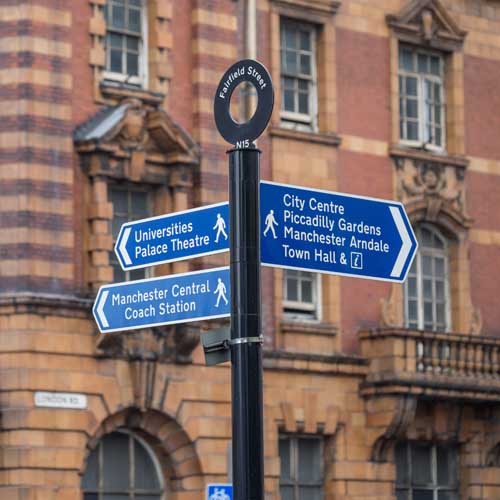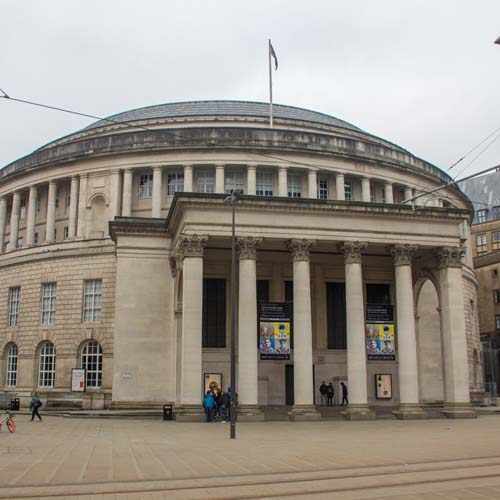Whilst you are walking around Manchester you can find many interesting statues, each with their link to Manchester. You will find monarchs, scientists, artists, a giant metal bike, a soft drink bottle, communist leader and even an American president!
Manchester’s statues play an important role in the city’s cultural landscape, serving as symbols of the city’s history, culture, and values. Manchester’s statues offer a rich and diverse array of cultural, historical, and artistic significance. They are an important part of the city’s identity and serve as a powerful reminder of the people and events that have shaped its past and continue to shape its future.
Below is a guide to several notable statues scattered throughout the city and their links to Manchester.
Emmeline Pankhurst
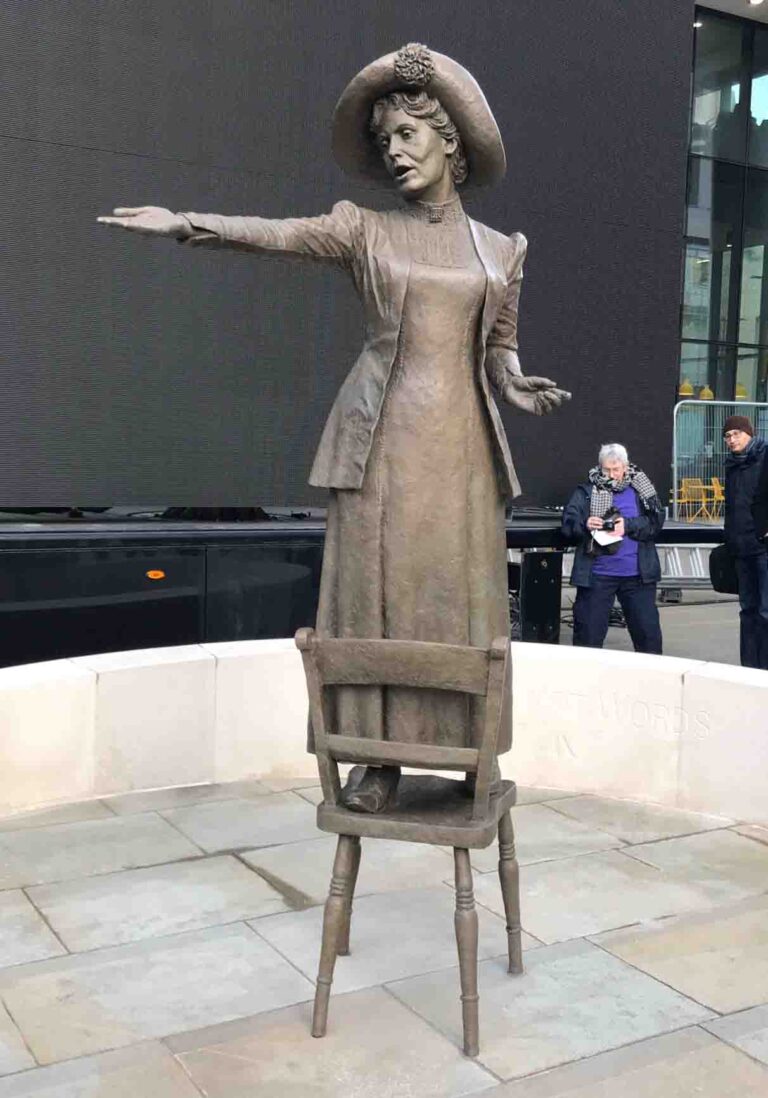
Emmeline Pankhurst was a prominent suffragette and leader in the movement for women’s right to vote in the United Kingdom. She was born in Moss Side,Manchester in 1858 and spent much of her life in the city, where she founded the Women’s Social and Political Union (WSPU) in 1903.
The statue of Emmeline Pankhurst in Manchester, sculpted by Hazel Reeves, is a tribute to Emmeline’s legacy and the pivotal role she played in the suffrage movement. The statue, which was unveiled in 2018, is located in St. Peter’s Square, a prominent location in the heart of Manchester.
Manchester was an important centre of the suffrage movement in the UK, and the city played host to many of the movement’s most important events and rallies. Emmeline Pankhurst and her family were also active members of the Manchester community, and their home in the city, which was known as the “Red House,” served as a hub for suffragette activities.
The statue of Emmeline Pankhurst in Manchester is a powerful reminder of the courage and determination of the suffragettes and their fight for women’s right to vote. It also serves as a testament to the city’s proud history of activism and social justice. By honouring Emmeline Pankhurst and her legacy in this way, Manchester has established itself as a leader in the ongoing struggle for gender equality and social progress.
Abraham Lincoln
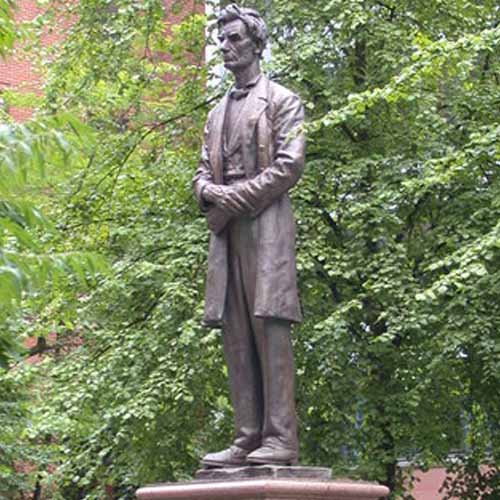
The Abraham Lincoln statue in Manchester is a symbol of the strong historical ties between the United States and the United Kingdom, and a tribute to Lincoln’s role as a champion of democracy and freedom.
The statue, which was unveiled in 1919, was a gift from the people of the United States to the people of Manchester in recognition of the city’s support for the Union during the American Civil War. Manchester was an important centre of textile production at the time, and many of its workers were vocal supporters of the Union cause.
The statue depicts Lincoln in a heroic pose, standing atop a pedestal inscribed with the words “Emancipation Proclamation” and “American Union.” The statue was created by George Grey Barnard, an American sculptor, and is considered one of the finest examples of public sculpture in the United Kingdom.
The Abraham Lincoln statue in Manchester is a powerful reminder of the shared values and history of the United States and the United Kingdom. It is also a testament to the enduring legacy of Lincoln, who remains one of the most revered and influential figures in American history. By honouring Lincoln in this way, Manchester has established itself as a centre of international friendship and cooperation.
A bronze statue of the former U.S. President Abraham Lincoln stands in Lincoln Square, which was named in his honour.
Queen Victoria
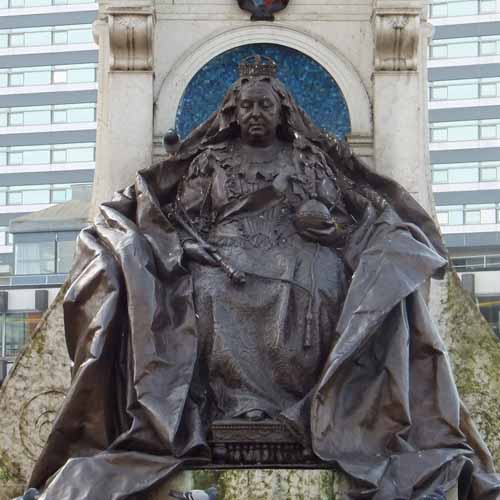
The Queen Victoria statue in Manchester is a tribute to one of the most significant figures in British history and a symbol of the city’s proud industrial heritage. The statue, which was unveiled in 1901, is located in Piccadilly Gardens, a prominent location in the city centre.Victoria faces away from the city centre, maybe because she did not like the look of Manchester and the feeling was mutual. She complained about Manchester being a very noisy and polluted city when she visited here in the 1850’s, which it was.
Queen Victoria was the reigning monarch of the United Kingdom from 1837 until her death in 1901, and her reign was marked by significant social, cultural, and economic changes. During her reign, Manchester became a hub of the Industrial Revolution, and the city played a key role in Britain’s global trade and commerce.
The statue of Queen Victoria in Manchester is a powerful symbol of the city’s past, and a reminder of the important role it played in the development of modern Britain. It is also a tribute to the enduring legacy of Queen Victoria, who remains one of the most beloved and influential figures in British history.
Today, the Queen Victoria statue in Manchester is a popular tourist attraction and a symbol of the city’s cultural heritage. It serves as a reminder of the city’s proud history and the important role it has played in shaping the modern world.
Alan Turing
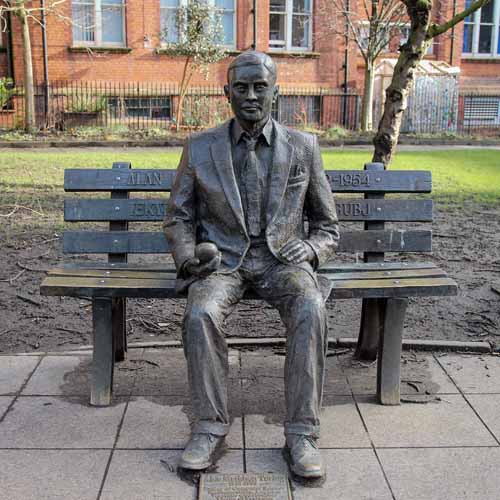
The Alan Turing statue in Manchester is a tribute to one of the most brilliant minds to have lived around here and a symbol of his groundbreaking contributions to computer science and cryptography.
Alan Turing was a British mathematician, logician, and computer scientist who played a key role in cracking the German Enigma code during World War II. He is widely regarded as one of the pioneers of computer science and artificial intelligence and made significant contributions to the development of modern computing.
The statue of Alan Turing in Manchester was unveiled on 23rd June, Turing’s birthday,2001 and is located in Sackville Gardens, near the University of Manchester’s Computer Science Department. The statue is a life-size bronze sculpture of Turing sitting on a bench with an apple in his right hand.
Richard Humphry conceived the idea after seeing the 1986 play about Alan ‘Breaking the code’. The monument was designed by local sculptor Glyn Hughes who buried his own old Amstrad computer under the statue as a tribute to Alan.
At the time of his arrest for being homosexual Alan had to face a prison sentence or oestrogen injections. Turing, a workaholic, chose the injections because he was researching Morphogenesis at Manchester University. One of the side effects of oestrogen was depression and after biting an apple with Cyanide, Alan died in 1954. It was thought to be suicide at the time but it could have been an accident as another side effect of Cyanide injections is losing powers of concentration. Another theory is that Alan wanted to disguise his suicide from his mother who he loved dearly and didn’t want her to have the shame of a criminal son. It was an offence to attempt suicide until 1961 and it remained a criminal offence to be homosexual in Britain until 1967.
The Association for Computing Machinery (ACM) Alan Turing Prize started in 1966 in the United States and is awarded to those who follow in the footsteps of the mathematical genius. Alan Turing Way, a road which is part of the inner ring road that flanks the Etihad stadium, was unveiled in 1994. In 2009 Gordon Brown,then the UK Prime Minister, made a public apology for the way Alan Turing was treated. On 23rd June 2021 Alan appeared on the Fifty pound note to coincide with what would have been his birthday.
In 2022 Alan was celebrated on the 50 pence piece with hidden meanings included in code.
The Alan Turing statue in Manchester is a powerful symbol of the city’s proud history of scientific innovation and its ongoing commitment to education and research. It is also a tribute to Turing’s legacy as a pioneering figure in computer science and a hero of the fight against fascism in World War II.
Today, the Alan Turing statue is a popular tourist attraction and a symbol of Manchester’s vibrant and diverse culture. It serves as a reminder of the city’s proud history and its ongoing campaign for equality.
Vimto
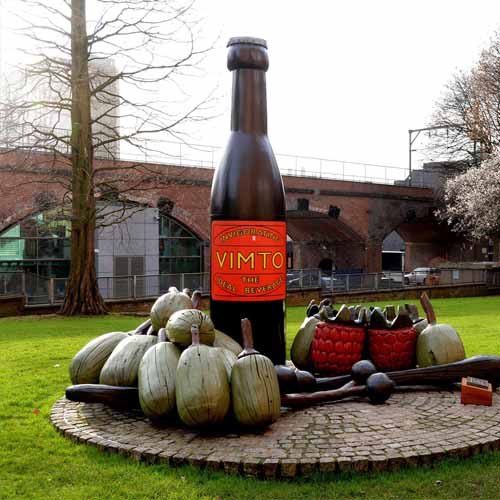
The Vimto monument in Manchester is a tribute to one of the city’s most famous products and a symbol of Manchester’s industrial heritage.
Vimto is a popular fruit-flavoured soft drink that was first produced in Manchester in 1908. The drink was invented by John Noel Nichols, a local businessman, and became popular among workers in the city’s textile mills.
Nichols was part of the Temperance movement so his religious persuasion meant that he was anti-alcohol. When the government brought in the Licencing Act in 1908 to reduce the amount of drinking establishments and alcoholics, Nichols came up with a delicious alternative.
The Vimto monument, designed by Kerry Morrison, unveiled in 1992, is located on Granby Row, near the site of the original Vimto factory. The monument is a large, brightly coloured sculpture that features the Vimto logo and celebrates the drink’s unique flavour.
Around the base of the bottle are enlarged wooden versions of some of the ingredients included in the Vimto recipe. Raspberries and blackberries can be seen alongside some big oval shaped green objects that are less obviously to identify. They are in fact grapes that Kerry Morrison painted red when she designed the monument. Acorn is the company that maintains the monument and a curious member of their workforce asked Vimto what is the colour of the grapes used in the ingredients and they said ‘green’. Acorn has since painted the grapes the correct colour.
The Vimto monument is a beloved symbol of Manchester’s cultural heritage and its proud history of innovation and creativity. It is also a testament to the enduring popularity of Vimto, which is now sold in over 80 countries worldwide.
Today, the Vimto monument is a popular tourist attraction and a symbol of Manchester’s vibrant and diverse culture. It is a reminder of the city’s past and its ongoing commitment to creativity and innovation, and it serves as a source of pride for the people of Manchester and fans of Vimto around the world.
Friedrich Engels
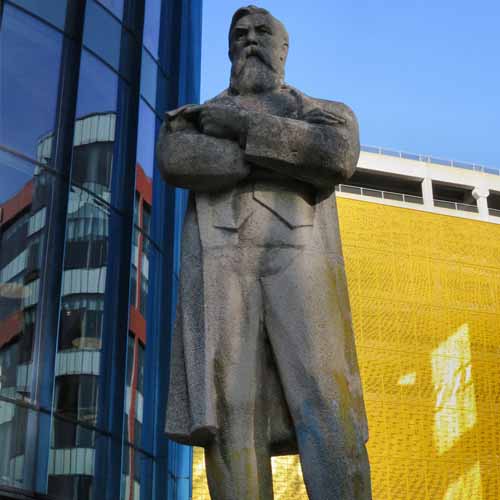
The Friedrich Engels statue in Manchester is a tribute to one of the city’s most influential historical figures and a symbol of his lasting impact on the world of politics and economics.
Friedrich Engels was a German philosopher, social scientist, and revolutionary who lived in Manchester for more than 20 years during the 19th century. He is best known for his collaboration with Karl Marx on “The Communist Manifesto” and his groundbreaking work “The Condition of the Working Class in England,” which exposed the harsh living and working conditions of Manchester’s working-class.
The statue of Friedrich Engels in Manchester was unveiled in 2017 and is located in Tony Wilson Place, a public square next to Home Cinema. The statue is a bronze sculpture of Engels standing with his arms folded. In Cyrillic [Slavic script] around the waistline of Engels it displays F.Engels. The statue was daubed in Yellow and Blue paint, chopped in half, and left at the roadside following the end of the Cold War in 1991. There was some writing at the front base of the statue which read ‘1971’ the year the statue was unveiled in the Ukraine and ‘2017’ the year it was brought to and unveiled in Manchester as part of the biennial Manchester International Festival, or M.I.F.. Phil Collins, namesake of the Genesis drummer, was the artist responsible for bringing the statue to where it now stands. The Manchester rain has washed away all evidence of the explanation, hence the metal plate at the rear of the statue.
The Friedrich Engels statue is a powerful symbol of Manchester’s proud history of political and social activism and its ongoing commitment to social justice and equality. It is also a tribute to Engels’ legacy as a pioneering thinker and writer who helped shape the modern world.
Today, the Friedrich Engels statue is a popular tourist attraction and a source of inspiration for Manchester’s activists, intellectuals, and social reformers. It serves as a reminder of the city’s rich history and its ongoing commitment to social progress and reform.
Victory Over Blindness
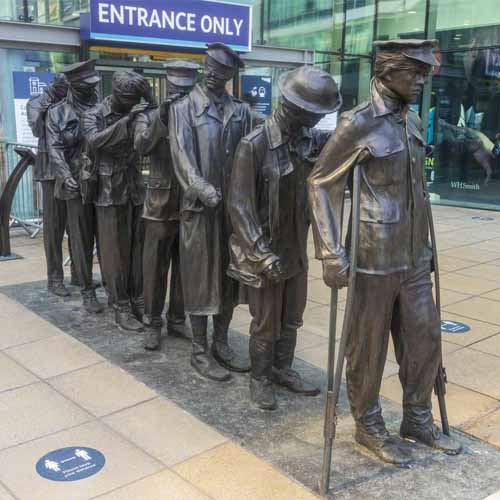
The Victory Over Blindness statue in Manchester is a remarkable tribute to the blind and visually impaired community. The statue is situated on Piccadilly Approach near the main entrance of the train station and is an iconic landmark that attracts many visitors each year. The statue is ideally located for a high amount of footfall and is a great photo opportunity so many people pose alongside the statue to have their picture taken.
The sculpture portrays a group of seven blind figures guiding and walking alongside each other, leading one another away from the battlefield of World War One. It is the only permanent memorial to the injured of that conflict in Britain. The figures are based on real veterans who lost their sight due to their frontline service in what was also known as The Great War.
What sets this sculpture apart is the absence of a plinth, and instead, it is placed at eye level, inviting interaction from those passing by.
The statue was realised by artist and sculptor Johanna Domke-Guyot who has partially lost her vision as a result of multiple sclerosis. Johanna works in many mediums including bronze, ceramics and glass. She specialises in representing the human form in a way that generates an emotive response from the viewer, something you can see reflected in the Victory Over Blindness statue.
Johanna, possessing both a bachelor’s and a master’s degree in fine art, has cultivated unique artistic techniques. However, her multiple sclerosis has resulted in reduced sensitivity in her fingers and partial visual impairment. Johanna’s personal disability has inspired her to advocate for greater accessibility to artworks, including her own work Victory Over Blindness, for the general public.
It was partly funded by Blind Veterans UK who have been offering lifelong support to ex-Service men and women with visual impairments since 1915. They promote and enable these veterans to regain their independence, meet new challenges and achieve a better quality of life.
The statue serves as a reminder that blind and visually impaired people can achieve great things and live fulfilling lives with the right support and resources. It also highlights the importance of accessibility and inclusion in society, and the need to create environments that are welcoming and accommodating for all.
Overall, the Victory Over Blindness statue in Manchester is a beautiful tribute to the strength, resilience, and determination of the blind and visually impaired community. It makes sense for the statue to be in Manchester because the treatment camp at Heaton Park in Manchester nursed and trained thousands of wounded First World War soldiers and sailors, including many with sight loss.
Conclusion
So you can see that there are many iconic statues here in Manchester due to our incredible history. Each statue has its own unique story.
Tell us, which is your favourite statue and why?

